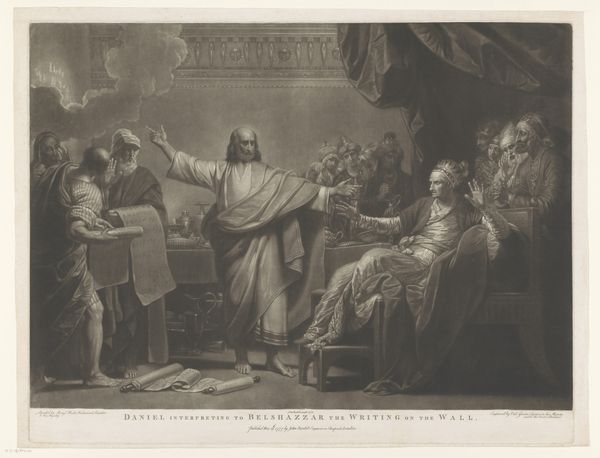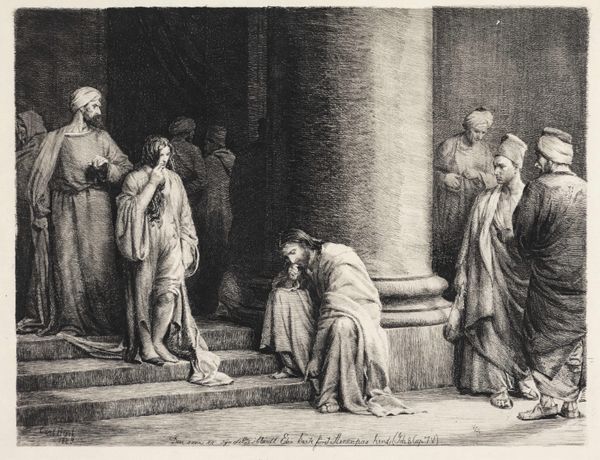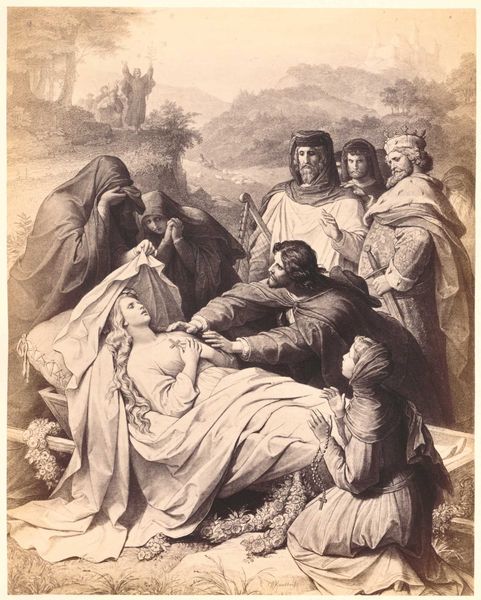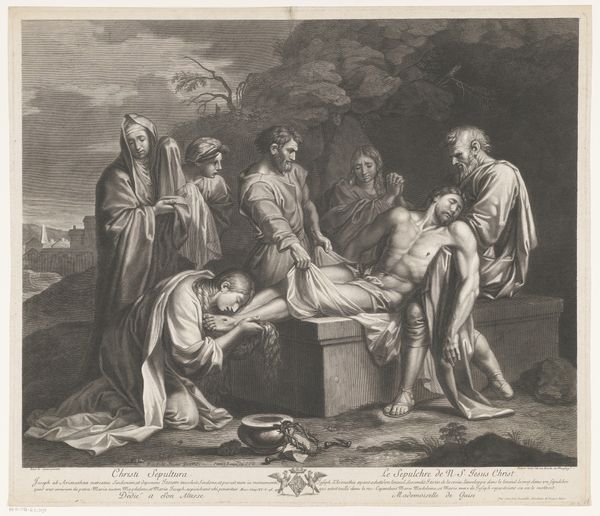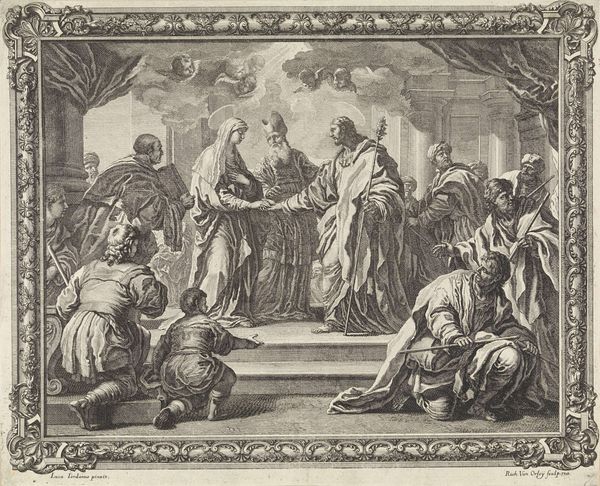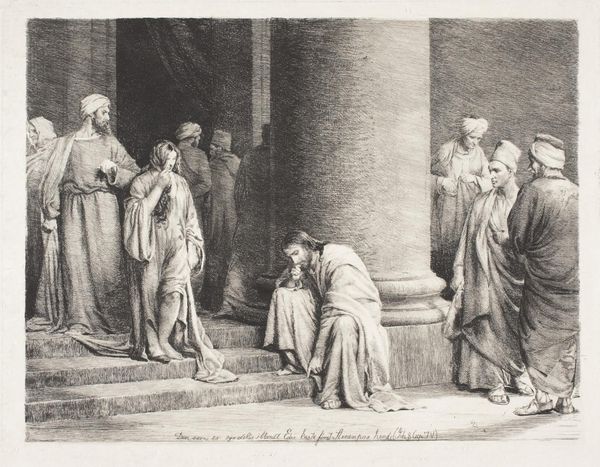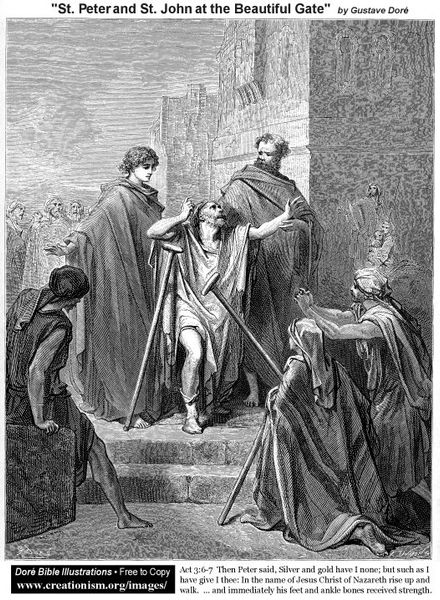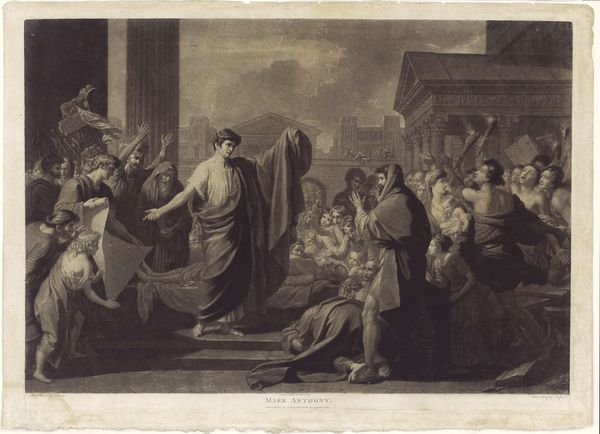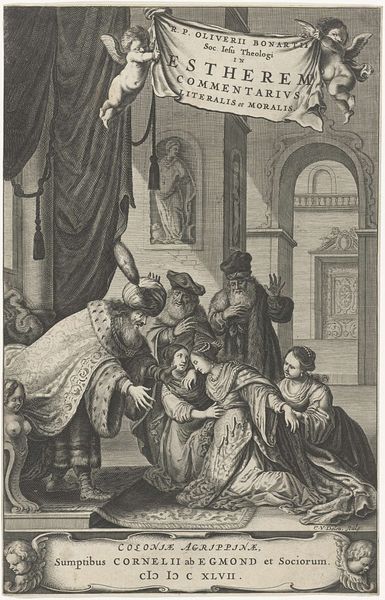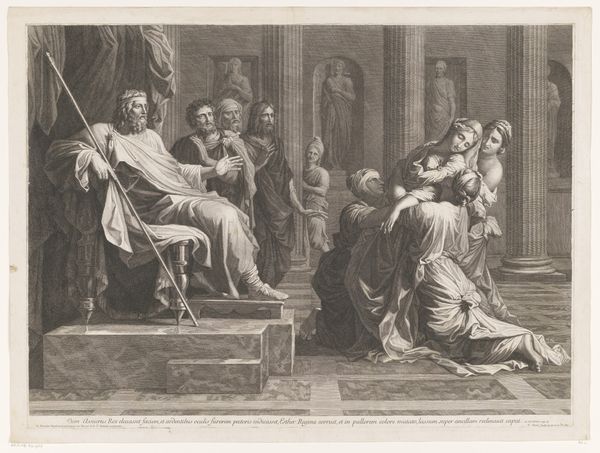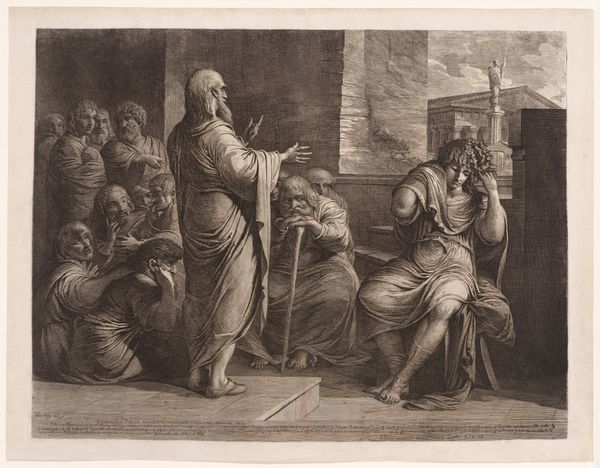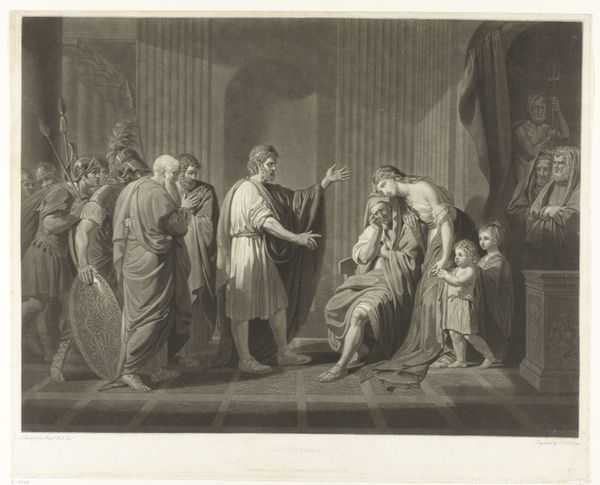
Philippus van Acarnanië leest een brief voor aan Alexander de Grote 1772
0:00
0:00
valentinegreen
Rijksmuseum
print, engraving
#
print photography
#
neoclacissism
#
narrative-art
# print
#
figuration
#
history-painting
#
engraving
Dimensions: height 440 mm, width 527 mm
Copyright: Rijks Museum: Open Domain
Curator: It feels incredibly theatrical, wouldn’t you agree? The sweeping drapery, the posed figures... very dramatic. Editor: Absolutely. We're looking at "Philippus van Acarnanië Reads a Letter to Alexander the Great," a print made in 1772. Valentine Green was the engraver. What strikes me is the emotional vulnerability Alexander is displaying despite being a powerful ruler. Curator: Ah, yes. It pulls at historical memory. You know, Alexander wasn’t just a warrior, he embodied hellenistic culture. Note the symbols – the shield at his feet is both practical and symbolic. But what of this heavy feeling it evokes? Is it worry? Sickness? Editor: Or the weight of leadership itself? I see it reflecting larger themes of power and the burden it places, specifically upon those who are expected to be powerful regardless of their own human fragility. Curator: Perhaps Green is depicting a transition? The image is about reading bad news from the battlefield, but also about something more significant. The messenger is cloaked in shadow while Alexander sits almost ethereally in the light, goblet in hand. Editor: This is where the historical context becomes key. Knowing Alexander's ambition and eventual demise gives the image a tragic, unavoidable premonition. He is not simply reacting to this particular message; he seems burdened by his future destiny. It’s a great visual cue related to privilege, as the burden can be too big even if one is privileged and sits on top. Curator: A lamentation, perhaps? Considering the Neoclassical elements – this is really about portraying larger narratives through these carefully staged moments. Even Alexander becomes more symbol than man here, he could embody leaders nowadays as well. Editor: Exactly! What appears classical and removed speaks directly to the dilemmas of contemporary leadership. Thanks for helping me put it in today´s context. Curator: My pleasure. I find new patterns here to understand, every single time.
Comments
No comments
Be the first to comment and join the conversation on the ultimate creative platform.
